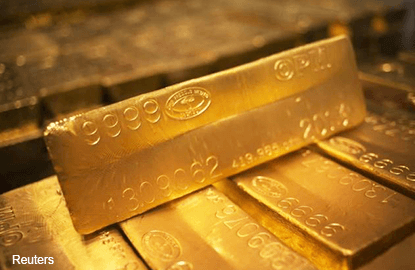
SINGAPORE (June 9): OCBC’s Bank of Singapore has turned less negative on the outlook of gold. Yet, it is still not outright bullish, as it finds it “hard to get excited” on gold’s upside potential over the medium-term.
In a Wednesday report, analyst Sim Moh Siong foresees that gold prices will trend sideway this year within a “broad choppy range” of US$1,170 to US$1,320 (S$1,577-S$1,779), with less selling pressure on gold following May’s “unusually weak” US payrolls outcome. He adds that he sees little chance of a June, or even a July rate hike, which underscores his prediction for gold prices as the metal remains closely linked to changes in the Fed rate pricing and the US dollar.
Sim acknowledges that gold has indeed been one of this year’s best performing assets, with its 18% YTD gain trumping other assets such as high yield and investment grade bonds. Some bears including ABN AMRO Group NV’s Georgette Boele have even reversed their outlooks after seeing gold’s rally, said Bloomberg last month.
And yet, Bank of Singapore has only turned “less bearish” on the gold outlook. Sim says unless the Fed switches course to actively join European Central Bank and the Bank of Japan in pursuing easing policy, current levels do not point towards turning significantly bullish on gold, as a rate hike is still inevitable.
Furthermore, recent gold import data has shown that the key markets of China and India have shown a “weaker appetite” in gold among consumers this year. In Sim’s opinion, this suggestion of subdued interest implies that lower prices would be required to reinstate demand.
Still, Bank of Singapore expects to see greater diversification into gold. “We believe gold will benefit as a diversifier in a portfolio and offer option value against the risk of stock market sell-off,” says Sim, highlighting that as China’s policy-induced recovery softens, market volatility is also expected to return. The Fed’s normalising of monetary policy also has potential to stoke worries of policy misstep, while the looming Brexit vote and US elections weigh on markets.
According to Sim, gold demand will stand to benefit from Negative Interest Rate Policies (NIRP), which central banks in Denmark, Eurozone, Japan, Sweden and Switzerland have already implemented. While foreign reserve managers continue to grapple with the challenges of negative nominal interest rates on a global basis, greater diversification into gold is likely, he notes.